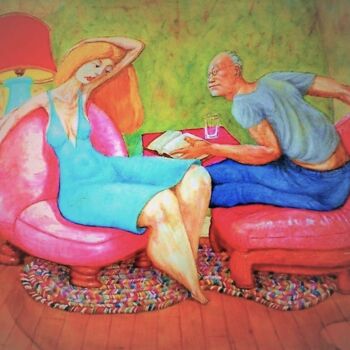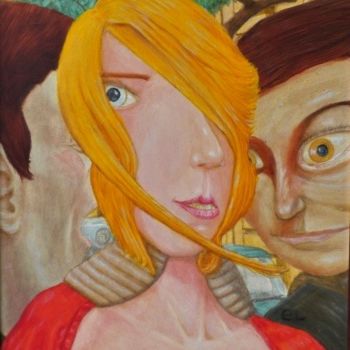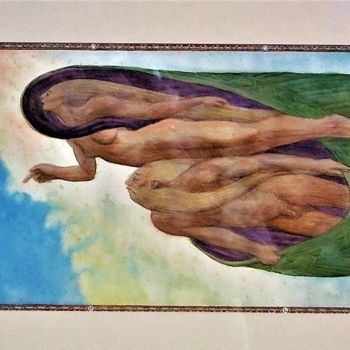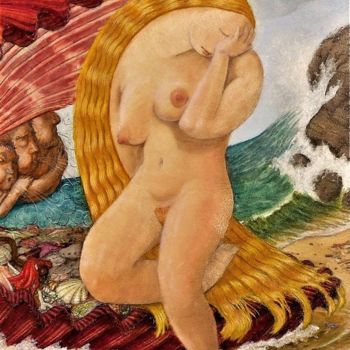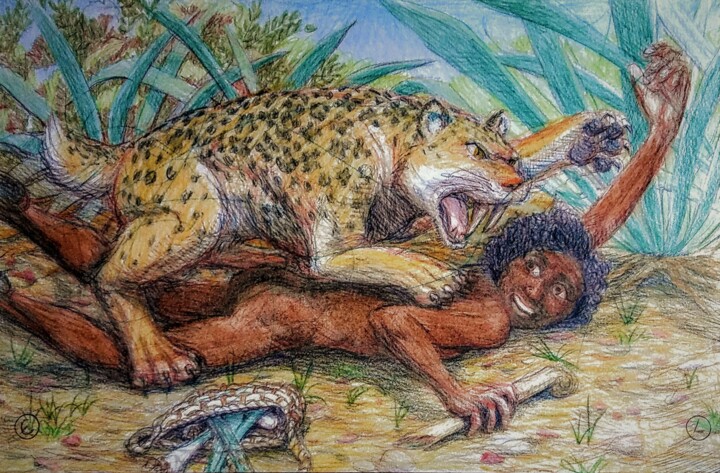


Let us know if you would like to see more photos of this artwork!
- Back of the work / Side of the work
- Details / Signature / Artwork's surface or texture
- Artwork in situation, Other...
She who would not be Our Ancestor (2022) Drawing by Edwin Loftus
More info
- Packaging (Envelope) All artworks are shipped with a premium carrier, carefully protected and insured.
- Tracking Order tracking until the parcel is delivered to the buyer. A tracking number will be provided so that you can follow the parcel in real-time.
- Delay Worldwide delivery in 3 to 7 days (Estimate)
More info
- Trackable Online Certificate of Authenticity Authenticity Certificates can be verified online at any moment by scanning the artwork code.
- Artist Value Certification Experts study the work and career of an artist then establish an independent and reliable average price value. The average price value situates the artist on a price range for a given period. The experts may also be asked to establish a more precise estimate for a particular work.
More info
100% secure payment with SSL certificate + 3D Secure.
More info
This image is available for download with a licence
Sold by Edwin Loftus
-
Original Artwork (One Of A Kind)
Drawing,
Pastel
on Cardboard
- Dimensions Height 11in, Width 17in
- Artwork's condition The artwork is in perfect condition
- Framing This artwork is not framed
- Categories Drawings under $5,000 Illustration History
She was about three feet tall, in her late teens, which meant she was an adult of childbearing age and probably had a mate about five to six feet tall that normally would have been the one dealing with sabretooth cats, an apex predator of the time.
She somehow became separated from her relatives and was stalked and killed by a hunting cat. The distance of the punctures indicated a feline smaller than an adult Smilodon, (Sabertoothed Tiger), possibly a juvenile or another related variety.
The cranial punctures were probably not what killed her. more likely the animal would have broken her neck with a swipe of its paw or choked her to death by closing its jaws on her neck. It then would have dragged her corpse to another site (leaving the punctures where it grasped her for dragging) and eaten her soft tissues, carrying some back to its cubs and burying the rest for a later meal.
The burying helped the remains to survive the intervening millennia. But the presence of other bones, besides the skull fragments, suggest the cat never returned to claim the corpse.
In this image I have attempted to suggest other details left out of this narrative. Beside her lies a bag made of bark and grasses, holding a collection of roots of some monocotyledonous plant. This provides an explanation for her separation from her family group. Seeking roots, she could have strayed too far away, and they were either unaware of her plight, or saw that she was lost and chose not to risk injury in a pointless rescue effort. She holds a broken femur as a digging tool. This goes with her suggested activity and provides a possible explanation for the cat not returning for her body. It is not shown, but I'm suggesting her kneeling position as she dug may have thrown off the cat's attack and it had to go for the neck bite. This left it vulnerable to a stab in the side or hind leg by the tool the woman held in her hand. The wound could have become infected, and the cat unable to return.
Another factor is that the corpse wouldn't have been preserved in dry, loose ground. Plants like onions, camas root, cattail, etc. tend to grow near water or damp ground. Flooding soon after the woman's death could have helped preserve her remains and that fits in with the rest of the narrative.
So, this picture is a sample of Paleontological forensic illustration, something with which I do not have great experience expertise. That's why I'm using a fifty-year-old National Geographic article as a source. My usual random squiggle approach led to a suggested image, and I developed it into this illustration as I progressed.
Why would I spend time on this? Just being able to know about something that happened this long ago is amazing. That it happened to a human being more like than unlike you or I is even more amazing. And I think it tells another sort of story, one about the tenacity of our ancestors living in a world vastly different but no less challenging than what most of us face today. This woman was probably more than halfway through her natural lifetime ... at less than eighteen years. We have come far and yet not far at all.
Related themes
Edwin Loftus is an American painter and draftsman born in 1951. His interest in art began at the age of 4 when he decided to draw something real rather than working from his imagination.
As a child he excelled at drawing and as a teenager he began to experiment with oil painting. In college, he took courses in art and art history and realized that true art had nothing to do with the quality of the drawing or painting, but that it had to have the ambition to push the boundaries and expand the visual experience.
He also studied philosophy, psychology and history and quickly realized that it was just another art establishment trying to defend its elitist industry and reward system. Their skills were almost non-existent, they knew nothing about psychology, perception or stimulus response, and they were extensions of the belief system that made communism, fascism and other forms of totalitarianism such destructive forces in the world. They literally believe that art shouldn't be available to ordinary human beings, but only to an elite "sophisticated" enough to understand it.
Edwin Loftus realized that the emperors of art had no clothes, but they were still the emperors. Gifted in art, he worked hard to acquire this skill. So he found other ways to make a living and sold a few artworks from time to time. For sixty years, many people enjoyed his works and some collected them.
Today, Edwin Loftus is retired. Even if he sold all his paintings for the price he asked, "artist" would be the lowest paid job he ever had... but that's the way it is. It won't matter to him after he dies. He just hopes that some people will like what he does enough to enjoy it in the future.
-
Nationality:
UNITED STATES

- Date of birth : 1951
- Artistic domains: Works by artists with a certified artist value,
- Groups: Certified Artists Contemporary American Artists




